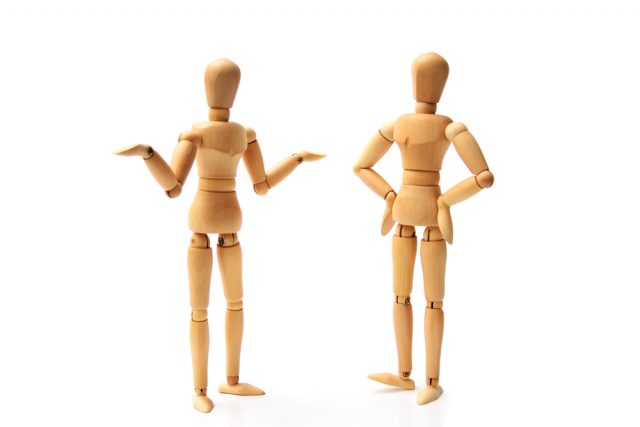An excerpt from the acclaimed book:
*
Body Language | Business Psychology
If you are not the best, then pretend you are. Muhammad Ali, Boxer
Everything we have said in this chapter (See Chapter 5 of What Business Can Learn From Sport Psychology) is about increasing your feelings of self-confidence and maintaining this state of belief. But in some situations not only do you want to feel confident, you want to look confident too. Across business interactions people will make judgments about how confident a person is on the basis of their body language (e.g., how they walk into a meeting, how they present, and cope with pressure). And on the back of this judgment, people arrive very rapidly at a conclusion into your credibility.
Research suggests that people who look confident are perceived as more likely to be successful. One research study showed that table tennis and tennis athletes who approached a serve with positive body language (stand and walk erect, shoulders back and chest out, head up, chin level with the ground, their eyes looking directly at the camera (the opponent) for prolonged periods of time), were perceived as: prepared, confident, focused, relaxed, assertive, aggressive, competitive, experienced, fit, and of a higher ability than the opposition. [22, 23]
In contrast, athletes who approached the serve with negative body language (hunched posture, head and chin held down, with eyes looking down or briefly glancing at the opponent) were perceived as: under-prepared, lethargic, not confident, not focused, tense, not assertive, not aggressive, not competitive, a novice, unfit, and of a lower ability.
Most strikingly, participants felt that they would have a much greater chance of defeating the athletes with negative body language than the athletes with positive body language. Even before the contest begins, athletes were predicting their own demise.
As I passed Shahid Afridi on the way out, he said I looked positive. I thought that’s what you need to look like. That’s what the people I talk to have been saying, ‘stop walking out like a schoolboy and walk out, chest out, like you mean business. With a presence.’ Ian Bell, Cricketer after his 115 in Faisalabad against Pakistan
So what does all this mean? An individual who walks into a meeting with their head held high – walking tall – displays confidence and composure. In contrast, a person who walks in with their head held low, hunched posture, demonstrates anxiety and concern. Further, the message you send to others with your behaviour influences the view they take of your skills and abilities. Would you trust a professional pitching for $2 million if they looked unsure of themselves, nervous and panicky, unable to articulate their points? That person might be brilliant, but their lack of confident behaviour is sending out the opposite message. After all, if they were so brilliant, and the $2 million is such a sound investment, why aren’t they more confident about it?
In our work with businesses we encourage individuals to pick a role model, or someone who they think has strong, positive body language, and simply adopt that person’s body language. We want them to act confidently even if, inside, they may not feel 100% sure of themselves. The real benefit of this approach is that it will influence the perceptions of others, so that your pitch for $2m is viewed as a confident, assertive, and safe investment. Your presentation is viewed as authoritative and powerful. Your interviewers see you as a composed, enthusiastic, and reliable candidate; not a nervous, panicky, liability.
Football means a hell of a lot to me. It was like an acting job, I used to feel that when I drove up to Old Trafford I would turn into this kind of mean machine. Roy Keane, Footballer
Over time, by acting like a confident person, you will also start to think and feel like a confident person. Psychologists call this ‘embodied cognition’ and it simply means that not only do you need to think confidently in order to act confidently, you need to act confidently in order to think confidently.
Many scientific studies have shown that by adopting particular behaviours, thoughts can be altered and manipulated. For example, in one study people were asked to adopt different facial expressions and postures while recalling pleasant or unpleasant autobiographical memories. It was found that when people smiled and adopted an erect posture, the retrieval of pleasant memories was faster than for the retrieval of unpleasant memories. So acting positively helped the participants to think positively.
If we relate this to self-confidence, we can start to understand just how multidimensional the quote from Muhammad Ali, at the start of this section, really is. Social psychologist Amy Cuddy has found that by adopting a confident body posture – interviewees were more likely to be hired than those who adopted a non-confident body posture. This could be due to various factors. Biologically, confident body language increases testosterone (linked to dominance) and decreases cortisol (linked to a threat state – see chapter 2) therefore physiologically the body is reacting positively to the situation.
Think of it like this. By acting confidently, your body is telling your brain that you are confident, dominant, and ready to perform. The brain receives that message and says “hmm, I must be confident, because I only behave like this when I am confident.” This is an important ingredient in performing when it matters most, so here’s a synthesis of what confident body language is:
Body Language Poses for Business
– Stand and walk erect
– Sit up straight
– Shoulders back and chest out
– Head up
– Be open – no folded arms or crossed legs
– Chin – level with the ground
– Maintain eye contact with audience, interviewer, or opponent
– Smile! Confident people are happy because they know they can succeed.
>> Acting like a confident performer will boost your inner confidence. Be sure to pick a role model and copy them.
So, as you can see, by choosing the right thoughts (positive visualization) and adopting the right behaviour (body language) you can ensure that you are mentally and physically in the right state to perform at your best. Try it today. Stand in front of a mirror and take on the role of a confident person. Then take on the role of a non-confident person. Which one makes you look more reliable, and importantly which one helps you feel more self-assured?



